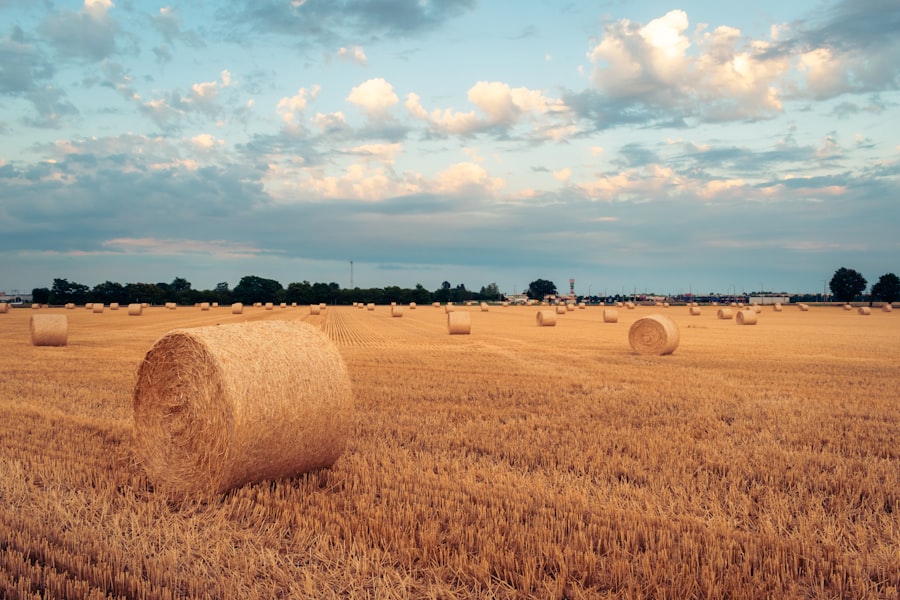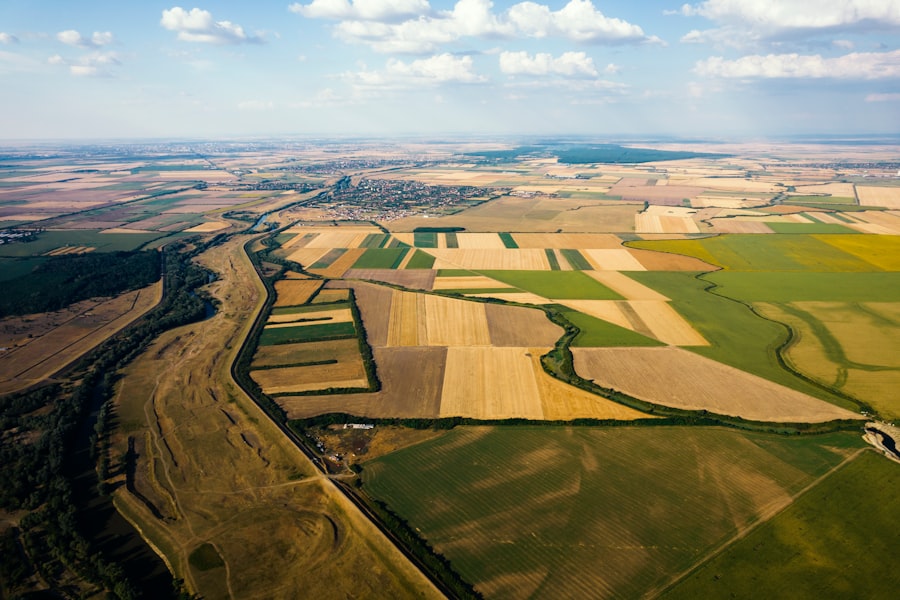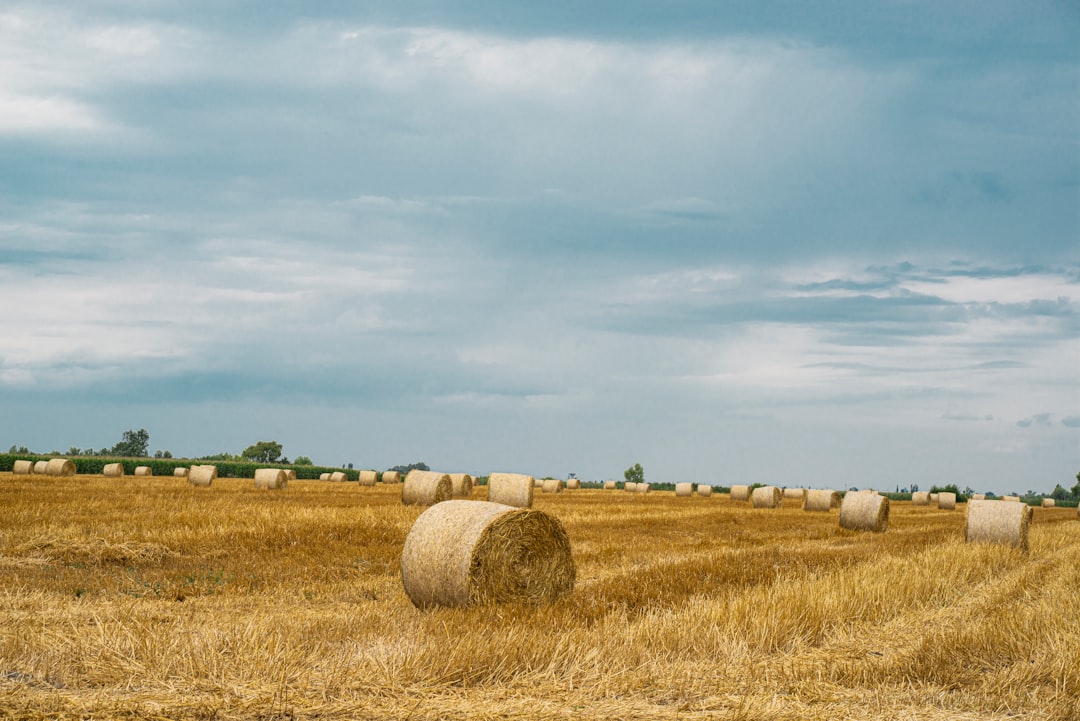Farmland valuation is a critical aspect of agricultural economics, influencing investment decisions, land use planning, and rural development strategies. The process of determining the value of agricultural land involves a complex interplay of various factors, including market demand, soil quality, location, and economic conditions. As the global population continues to grow and the demand for food increases, understanding the nuances of farmland valuation becomes increasingly important for investors, farmers, and policymakers alike.
This article delves into the multifaceted world of farmland valuation, exploring the factors that influence land prices, historical trends, current market conditions, and the implications of government policies and climate change. The significance of farmland valuation extends beyond mere financial metrics; it encompasses social, environmental, and economic dimensions. For instance, farmland serves as a vital resource for food production, contributing to food security and rural livelihoods.
As such, accurate valuation is essential not only for individual stakeholders but also for broader societal goals. This article aims to provide a comprehensive overview of farmland valuation, offering insights into its complexities and the various elements that shape its landscape.
Key Takeaways
- Farmland valuation is influenced by various factors such as location, soil quality, infrastructure, and market demand.
- Historical trends show that farmland values have generally appreciated over time, with occasional fluctuations due to economic and environmental factors.
- Current market conditions for farmland are influenced by factors such as commodity prices, interest rates, and government policies.
- Risks and challenges in farmland investment include weather-related risks, market volatility, and regulatory changes.
- Government policies play a significant role in farmland valuation through subsidies, land use regulations, and tax incentives.
Factors Affecting Farmland Values
Numerous factors contribute to the valuation of farmland, each playing a unique role in determining its market price. One of the most significant influences is the quality of the soil. Fertile land with rich nutrients is typically valued higher than less productive soil.
The ability to support diverse crops and sustain high yields directly impacts a farmer’s profitability and, consequently, the land’s market value. Additionally, location plays a crucial role; farmland situated near urban centers or major transportation routes often commands higher prices due to increased accessibility and demand for local produce. Market demand is another pivotal factor in farmland valuation.
As consumer preferences shift towards organic and locally sourced products, certain types of farmland may experience increased demand, driving up prices. Economic conditions also play a vital role; during periods of economic growth, investment in agriculture tends to rise, leading to higher land values. Conversely, economic downturns can result in decreased demand for farmland, causing values to stagnate or decline.
Understanding these dynamics is essential for anyone looking to invest in or assess farmland.
Historical Trends in Farmland Valuation

Examining historical trends in farmland valuation reveals a complex narrative shaped by various economic cycles and societal changes. Over the past few decades, farmland values have generally trended upward, reflecting a growing recognition of agriculture’s importance in global food systems. For instance, the 2000s saw a significant increase in land prices driven by rising commodity prices and increased global demand for food.
This period marked a shift in how investors viewed farmland—not merely as a commodity but as a strategic asset with long-term value. However, historical trends also highlight periods of volatility. The 1980s farm crisis serves as a stark reminder of how economic factors can dramatically impact farmland values.
During this time, high interest rates and falling commodity prices led to widespread financial distress among farmers, resulting in plummeting land values. Such historical events underscore the importance of understanding the cyclical nature of farmland valuation and the need for investors to remain vigilant about market conditions.
Current Market Conditions for Farmland
| Metrics | Data |
|---|---|
| Farmland Price | 5,000 per acre |
| Farmland Rent | 150 per acre per year |
| Farmland Vacancy Rate | 5% |
| Farmland Sales Volume | 10,000 acres |
As of late 2023, current market conditions for farmland reflect a mix of optimism and caution among investors and farmers alike. The ongoing demand for food production continues to drive interest in agricultural land, particularly as global supply chains face disruptions due to geopolitical tensions and climate-related challenges. In many regions, farmland prices have reached record highs, fueled by low interest rates and increased investment from institutional buyers seeking stable returns.
However, these favorable conditions are tempered by concerns about sustainability and environmental impact. Investors are increasingly aware of the need for responsible land management practices that ensure long-term viability. Additionally, rising input costs—such as fertilizers and labor—pose challenges for farmers, potentially affecting their ability to maintain profitability and thus impacting land values.
The current market landscape is characterized by a delicate balance between opportunity and risk.
Risks and Challenges in Farmland Investment
Investing in farmland is not without its risks and challenges. One significant concern is the volatility of agricultural markets, which can be influenced by factors such as weather patterns, trade policies, and global economic conditions. For instance, unexpected droughts or floods can severely impact crop yields, leading to fluctuations in income for farmers and affecting land values.
Investors must be prepared for these uncertainties and consider them when assessing potential returns on their investments. Another challenge lies in the regulatory environment surrounding agriculture.
Changes in these policies can create uncertainty for investors and farmers alike. Furthermore, competition for land from non-agricultural uses—such as urban development—can drive up prices but may also lead to conflicts over land use priorities. Navigating these complexities requires a thorough understanding of both local regulations and broader market trends.
The Role of Government Policies in Farmland Valuation

Government policies play a crucial role in shaping farmland valuation by influencing agricultural practices, land use regulations, and financial incentives for farmers. Subsidies and support programs can enhance farm profitability, thereby increasing land values. For example, programs that promote sustainable farming practices or provide financial assistance during downturns can help stabilize income for farmers, positively impacting their ability to invest in land improvements.
Conversely, restrictive zoning laws or environmental regulations can limit land use options and affect marketability. Investors must stay informed about potential policy changes that could impact their investments. Additionally, government initiatives aimed at promoting food security or sustainable agriculture can create new opportunities for farmland investment by encouraging practices that enhance productivity while preserving environmental integrity.
Impact of Climate Change on Farmland Values
Climate change poses significant challenges to agriculture and has profound implications for farmland valuation. As weather patterns become increasingly unpredictable—resulting in more frequent droughts, floods, and extreme temperatures—farmers face heightened risks that can directly affect crop yields and profitability. Consequently, these factors can lead to fluctuations in farmland values as investors reassess the long-term viability of agricultural operations in affected regions.
Moreover, climate change is prompting shifts in agricultural practices as farmers adapt to new realities. This adaptation may involve investing in more resilient crop varieties or implementing sustainable farming techniques that mitigate environmental impact. While such changes can enhance productivity over time, they also require upfront investment that may not always yield immediate returns.
Investors must consider these dynamics when evaluating farmland’s future value in an era increasingly defined by climate uncertainty.
Technological Advancements and Farmland Valuation
Technological advancements are revolutionizing agriculture and significantly influencing farmland valuation. Innovations such as precision farming techniques, data analytics, and biotechnology are enhancing productivity while reducing costs for farmers. These advancements enable more efficient use of resources—such as water and fertilizers—ultimately leading to higher yields and improved profitability.
As technology continues to evolve, it also affects how investors assess farmland value. Properties equipped with modern irrigation systems or advanced farming equipment may command higher prices due to their potential for increased productivity. Furthermore, the integration of technology into farming practices can attract a new generation of tech-savvy investors who recognize the long-term benefits of investing in innovative agricultural solutions.
Comparing Farmland Valuation to Other Investment Options
When evaluating investment options, farmland presents unique advantages compared to traditional assets such as stocks or bonds. One key benefit is its intrinsic value as a tangible asset that provides essential resources—food production being paramount. Unlike stocks that can be subject to market volatility or bonds that may offer limited returns during low-interest periods, farmland often provides stable cash flow through rental income or crop sales.
Additionally, farmland has historically demonstrated resilience during economic downturns. While other asset classes may experience significant fluctuations in value during recessions, agricultural land tends to maintain its worth due to ongoing demand for food production. This stability makes farmland an attractive option for investors seeking diversification within their portfolios while also contributing positively to societal needs.
Expert Opinions on Farmland Valuation
Experts in agricultural economics emphasize the importance of thorough analysis when it comes to farmland valuation. Many advocate for a holistic approach that considers not only financial metrics but also environmental sustainability and social impact. According to industry analysts, understanding local market dynamics is crucial; what works in one region may not apply universally across different agricultural landscapes.
Furthermore, experts highlight the need for ongoing education among investors regarding emerging trends—such as climate change adaptation strategies or technological innovations—that could influence future valuations. Engaging with agricultural professionals and staying informed about policy developments can provide valuable insights that enhance decision-making processes related to farmland investments.
Is Farmland Overvalued in Today’s Market?
As the landscape of farmland valuation continues to evolve amid changing market conditions and societal expectations, questions arise regarding whether current prices reflect true value or if they are inflated due to speculative trends. While some analysts argue that rising prices are justified by increasing demand for food production and sustainable practices, others caution against potential bubbles driven by external factors such as low interest rates or institutional investment. Ultimately, determining whether farmland is overvalued requires careful consideration of various elements—including historical trends, current market conditions, risks associated with climate change, technological advancements, and government policies.
Investors must remain vigilant in their assessments while recognizing that farmland represents not only an investment opportunity but also a critical resource for future generations. As such, thoughtful engagement with these complexities will be essential for navigating the intricate world of farmland valuation successfully.
In the current economic climate, the question of whether farmland is overvalued has become a topic of significant debate among investors and economists. A related article that delves into the intricacies of farmland valuation and its implications for investors can be found on How Wealth Grows. This article provides a comprehensive analysis of the factors influencing farmland prices and offers insights into potential future trends. For a deeper understanding of this issue, you can read the full article by visiting How Wealth Grows.
WATCH THIS! 🫣Why Wall Street Is Buying Up America’s Farmland (And Why It Should Terrify You)
FAQs
What factors contribute to the valuation of farmland?
Farmland valuation is influenced by factors such as location, soil quality, crop yields, market demand for agricultural products, and government policies.
Is farmland currently overvalued?
The valuation of farmland can vary by region and is influenced by market conditions. Some experts believe that farmland may be overvalued in certain areas due to factors such as low interest rates and high demand for agricultural products.
What are the potential risks of investing in overvalued farmland?
Investing in overvalued farmland can pose risks such as lower returns on investment, potential price corrections, and increased vulnerability to market fluctuations.
How can investors determine if farmland is overvalued?
Investors can assess farmland valuation by considering factors such as historical price trends, rental rates, crop yields, and the overall economic outlook for the agricultural sector.
What are some strategies for mitigating the risks of investing in farmland?
Investors can mitigate the risks of investing in farmland by conducting thorough due diligence, diversifying their agricultural holdings, and staying informed about market trends and regulatory changes.
